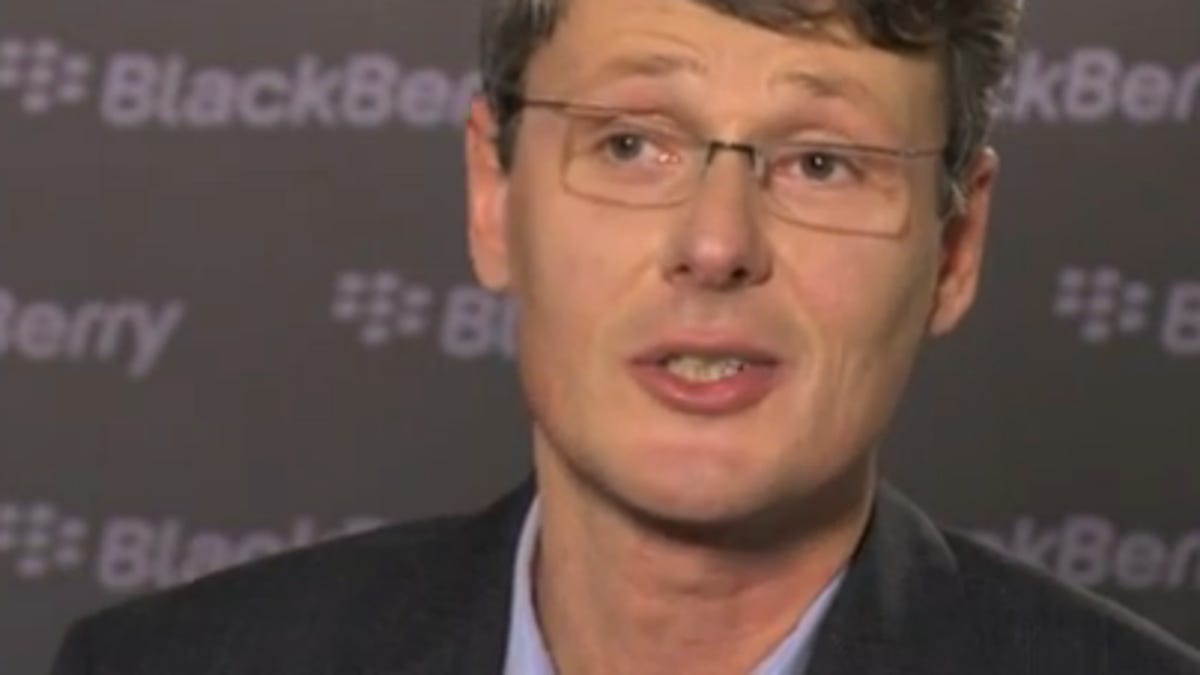Who is RIM CEO Thorsten Heins, anyway?
The BlackBerry maker is rolling the dice on a new CEO who knows the old way. Yet Thorsten Heins isn't a name many outside the Canadian company will recognize. Who is he, where does he come from, and what does he believe he must do to save RIM?

After long years of troubled management for BlackBerry-maker RIM, the company's two co-founder CEOs stepped aside to see what some fresh blood could do to revive the ailing smartphone brand. Yet for those outside the company, Thorsten Heins (pronounced TORE-sten) is a veritable man of mystery.
That's about to change, and rapidly, as the new executive gets pushed into the glaring spotlight and will be expected to turn RIM around, and fast.
Where did he come from?
Heins, 54, hails from Germany, where he earned a master's degree in Science and Physics from the University of Hannover. He joined Munich-based Siemens in 1984, and worked in several branches of the engineering conglomerate, including research and development, customer service, sales, and product management, rising to become the CEO of several business units. Eventually, Heins became the chief technology officer of the Siemens Communications Group, as well as a member of its board.
In 2007, Heins joined RIM, based in Waterloo, Canada, where he had an intimate role in RIM's product roster. He rose to the rank of senior vice president for the handheld branch of RIM's business, and then assumed the role of one of RIM's co-chief operating officers.
In addition, Heins currently serves on the board of directors for the Canadian German Chamber of Industry and Commerce.
According to the CBC News, Heins is married with two children, is interested in motorcycles and hiking, and made about $1.92 million in 2011.
His plans, in his own words
Though Wall Street may not care yet about RIM's game of musical chairs in regard to leadership, those who've closely watched the company's ups and down do.
Will Heins' fresh take on RIM give it the jolt it needs to remain relevant? Or will his four years as a company insider reveal more of the same unyielding faith in products that are declining in previously strong markets like the U.S.?
Heins shared his own thoughts in a series of "meet the press" videos on RIM's Web site.
"I see us absolutely as one of the leading players globally," Heins said in a video, adding that the company is still expanding. "75 million people [are] using our devices, and I think this is a very, very strong starting point for us for the future."
Yet he also drilled down into more specifics in an interview, mentioning five key areas he wants to improve, including doing a better job when it comes to setting shareholder expectations, and investing in QNX as a computing platform, not just a mobile platform. He also cited a long-held goal that RIM has struggled to achieve: piquing consumer interest while keeping hold of loyal enterprise customers.
What else he must do
It's clear by the company's shrinking assets that RIM's old formula hasn't been working.
We have our own opinions on what Heins and his team needs to do to steer RIM into calmer and more profitable waters. Speeding up the production cycle to get a strong version of BlackBerry 10 out the door faster is an obvious and attainable move.
As Heins knows, the company simply must regain its focus on core customers, and offer them new, compelling services and features to keep them from straying to Android and iPhone.
For my part, I can't stress enough that offering a strong product is the key. RIM's hardware isn't the issue; it's the software, with its outdated look and feel, and features and services that for many pale in comparison to competitors. Developer interest is waning, security is becoming less important to many, and demand in integrated cloud services is on the rise. If RIM can't provide all the pieces, it may be time to partner with an outfit that can.
Heins seems to acknowledge this in a video, at least abstractly. "This is what we have to make sure, that we always stay ahead, that we always stay on the edge," he says. "And then, converting this into great product, great offerings, and then into business success. I mean, that's it, right? That's the recipe."
It sounds simple enough in theory, but the question now is how well RIM's new CEO will be able to execute his recipe in the rapid pace of cell phone innovation.

